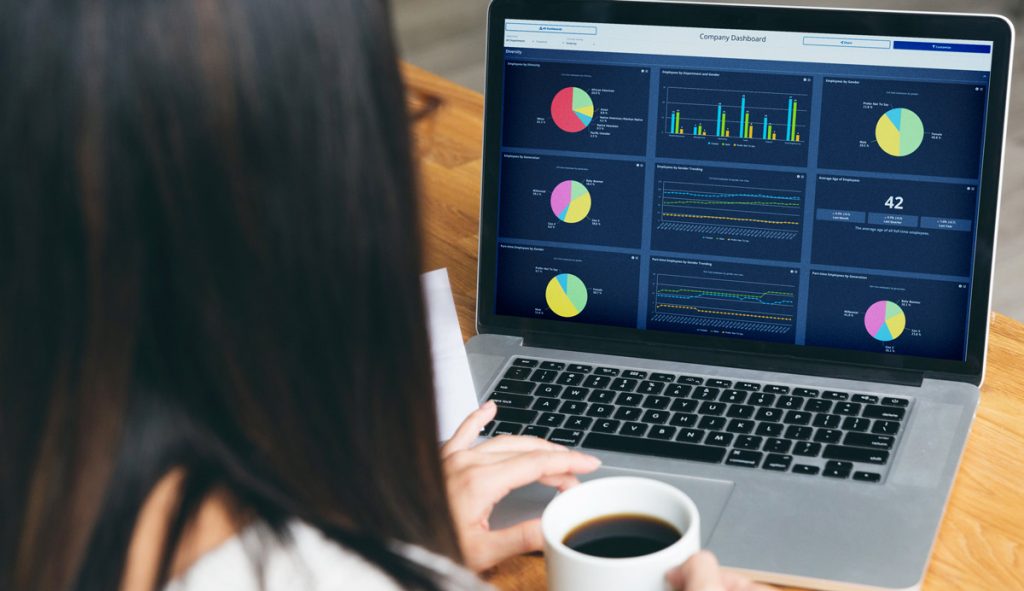Affinity can be defined in one of the following three ways by Merriam Webster. First, “a feeling of closeness and understanding that someone has for another person because of their similar qualities, ideas, or interests.” Second, “a liking for or an attraction to something.’ And, third, “a quality that makes people or things suited to each other.” A further formal definition expounds on these ideas and defines it as such: “a relation between biological groups involving resemblance in structural plan and indicating a common origin.”
In everyday life, you may feel you have an affinity with the people in your running/book/tennis/chess/[insert interest here] club. You may share an affinity with others who love to cook, love gin, or love to eat in Greek restaurants.
But, at work, you could also feel an affinity with those around you. If you’re in an HR department, you may feel an affinity with your colleagues because of your shared interests, your shared job roles, or your shared studies.
However, in the workplace, the darker side of affinity occurs when what HR experts call “affinity bias,” happens – similar to in-group bias. We naturally gravitate to those who are like us – or who with think are like us – because it’s the way we form human connections but if we only choose those that we perceive are like us such as in appearance, beliefs, or background, then we run the risk of not hiring talent that would benefit the company in favor of a workforce that lacks diversity.
But as there’s no place for discrimination in the workplace, ethically, and for other reasons including how diversity is proven to make companies more successful and profitable, let’s explore how to handle affinity bias.
Why do we gravitate towards people who are similar to us?
Psychology Today notes that we like people who are similar to us for complex reasons.
First is consensual validation, which is where people who share our attitudes make us feel validated in our choices (we both love the film Amelie so it’s okay to like that film).
Second is cognitive evaluation, which is where we make generalizations and categorizations about people based on any information we have about them. If we learn that person shares a commonality with us, we feel more positively about that person because we feel positive about ourselves, generally speaking. We are creatures who like what we like and we like when other people like what we like.
Third is certainty of being liked, where we think that since we like people who like the same things as us, those people who like the same things as us will also like us. We also, by extension, like people who like us or if we think they like us.
Fourth is fun and enjoyable interactions, which is where we find it more enjoyable to spend time with someone when you have things in common.
Fifth is self-expansion opportunity, which is where we think we can gain knowledge and experience from spending time with others. Conversely, spending time with a dissimilar person would make us learn more actual new knowledge but we perceive that we will learn from someone similar to us.
So, all in all, psychologically we choose those who are similar to us because we perceive they’ll like us, we can learn from them, they’ll be more fun to be around, we will like them, and we want to feel validated.
The article also notes that there’s a difference between having things in common with someone (actual similarity) and perceiving that we have things in common (perceived similarity). Our assumptions about similarity are only based as far as we actually know people.
On another note, although somewhat unrelated, the studies also explained that couples with similarities had fewer conflicts and married couples with similar backgrounds such as educational attainment and even age are less likely to get divorced.
But even though we spend one-third of our lives at work, you don’t have to share a bed or a home with your colleagues, you just have to respect their ideas and get on in the workplace – and that’s where diversity will help.
How affinity bias impacts HR leaders
We just spent a long time talking about the etymology of the word “affinity” and why we like people similar to us, but what does that have to do with HR, you may ask?
The term “affinity bias” is a term in neuropsychology that explains how we are drawn to people who we feel share our background, beliefs, and interests. So, just as those things matter subconsciously to us in day-to-day life, they matter to us in a work context.
That’s great but not so great when you’re the hiring manager and you’re the gatekeeper for someone’s career. Research shows that even in people who do sincerely value diversity, people still favor those they perceive to be like them. It’s a difficult bias to remove.
You may have interviewed a candidate before and thought they looked like the right fit on paper. They had just the right skills and experience but after their interview, you may have just felt that they weren’t quite the right fit. Was it that they just didn’t have the right “chemistry” for the company or were you falling prey to affinity bias? Did you subconsciously perceive them to be different from you or share a different set of beliefs or values?
Many of us think we are great judges of character but it may often be our affinity bias that gives us that little voice on our shoulders. It’s part of the same psychological reasoning why intelligent people fall for Ponzi schemes. Evolutionarily, we are hardwired to trust and we form connections with those who we think are like us.
If you went to the same university as the candidate, have the same qualifications, or similar age and socioeconomic background, you may gravitate towards that candidate. You may be lucky that they are a great fit for the role, but you may have overlooked an amazing candidate, a better candidate, with whom you subconsciously did not share “affinity.”
Of the eleven million bits of information the human brain captures, we can only process forty each time so our brains take shortcuts to process information faster so we make assumptions about gender, sexuality, class, ethnicity, intelligence, attractiveness, capability, and so forth.
In leadership, leaders often want to nurture and coach those they feel are like them, where they see themselves in that person which leads to unfair promotion practices. It’s also the reason men are often promoted over women as more men are in leadership positions and notice other men who they think are similar to them. They may also unconsciously value the opinions of people who are like them, ignoring diverse opinions.
We don’t have to spell it out so explicitly that affinity bias needs to be kept in check so that your company isn’t hiring carbon copies of your hiring manager but hiring the best person and skills for the role. If you don’t find ways to avoid affinity bias, you’ll run into trouble with removing potential diversity. And bad hiring leads to low productivity and high turnover rates.
How to avoid affinity bias
The first step in avoiding affinity bias is recognizing that affinity bias is unavoidable if you’re human but you should be aware that you cannot and shouldn’t hire on “gut feeling” alone. There should be processes in place to eliminate and/or greatly reduce affinity bias.
Second, you want to create inclusive job descriptions that attract diverse candidates. You want those descriptions to be fair and unbiased.
Third, you’ll want to create hiring questions that remove bias and create a system whereby you can assess candidates on the exact skills and attributes you require for the role. That system could be a points-based system or something else, but you also want to consult with a diverse hiring team where you can ensure you’re getting a difference of opinion that’s not based on your individual assumptions.
Fourth, you can remove personal data from applications and randomize applications so you aren’t making assumptions about that person before analyzing their skills.
Fifth, you can use data and software to help weigh in on decisions since computers do not have affinity bias.
Bias is natural. It’s part of our human nature. It’s survivalistic. It promotes security and safety. There’s a reason our brains are hardwired for it so it’s not always a “bad” thing but we do need to be aware that we are not the all-knowing rational creatures we think we are (unfortunately) and in making smart decisions for our organizations, we need to be aware of our human limitations – of which affinity bias is one.
How can an HR dashboard help you handle affinity bias?
At Employee Cycle, our HR dashboard manages every part of the employee life cycle from hiring to retiring and everything in between. On our dashboards, you have the option to filter by percentage of diverse hires to help you understand about the diversity, equity, and inclusion in your organization. If you find that your employees are not diverse or certain departments lack diversity, then you may have an unconscious “affinity bias” in your organization. But the good news is you can work on correcting it. Being more diverse, with employees from diverse backgrounds, means more profit and clout for your organization. If you want to get started, schedule your free demo now.













